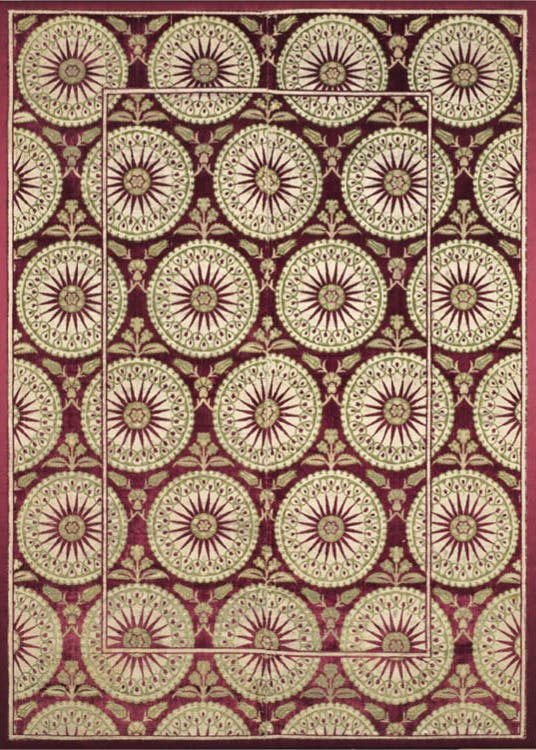
- Magazine Article
- Collection
Ottoman Opulence
Spectacular velvet recalls a court where textiles symbolized power

Louise W. Mackie Curator of Textiles and Islamic Art
Foreign ambassadors cooled their heels amid splendid hospitality while waiting days for an audience with the sultan of the Ottoman Empire. Soon after his conquest of Istanbul in 1453, Sultan Mehmed II proclaimed it the empire’s capital, began construction of the Topkapi Palace, and established court ceremonials. During the long reign of Sultan Suleyman the Magnficient (1520–66), the empire expanded to its greatest extent, from Iraq to Tunisia and even to the gates of Vienna. Luxury textiles and elaborate dress were highly visible throughout the Topkapi Palace during imperial ceremonies, orchestrated to overwhelm visitors with the empire’s immense power and unfathomable wealth. Visiting ambassadors and their entourages received prestigious robes of honor according to rank.

A luxurious brocaded velvet that may have furnished accommodations in the palace has recently entered the CMA collection. This sensational Ottoman Turkish velvet cover’s rare sunburst pattern forms the field and also the border area, defined by a plain white stripe. The cover, composed of two loom widths seamed down the center with a well-matched pattern, was woven in a brocaded velvet technique with crimson and chartreuse velvet pile and gilt- and silver-metal thread, the highest quality of Turkish velvet.
The refined yet dramatic style represents the art of the Ottoman Turkish court in the early 17th century at its finest. Bold sunbursts with lively reciprocal movement contrast with delicate flora, rosettes in the center and tulips alternating with peacock feathers around the exterior. The favorite Turkish flowers of carnations, tulips, and hyacinths form interstitial motifs. A manuscript of the poems of Sultan Suleyman the Magnificent illuminated by the court artist Kara Memi in 1566 is credited with starting the fashion for motifs developed from native flowers. Lush floral gardens within the Topkapi Palace walls and along the Bosphorus, the narrow strait between European and Asian Turkey where sultans and courtiers enjoyed pleasure cruises, still testify to their popularity.

The impressive graphic appearance of this exceptional sunburst pattern is considerably more dynamic than the more common version with short rays. Although as usual the silver-metal thread has mostly deteriorated, exposing the ivory satin-weave ground, the gilt-metal thread is mainly intact in the center of the sunbursts and interstitial flora. In addition, the silk thread is lustrous and the crimson and chartreuse velvet pile colors remain intense, features coveted by knowledgeable textile consumers.

Most rectangular covers, such as carpets and book bindings, are decorated with two different patterns, one in the field and another in the border. In contrast, this velvet cover displays the same pattern in both the field and the border, separated by a subtle yet distinct plain white stripe. This unusual layout should eventually provide a clue to the cover’s original function, for which documentation is oddly lacking, or at least not yet located, in either Ottoman miniature paintings or archival records. Instead, miniatures provide more evidence of what it was not—such as a table cover. Lacking evidence, one can postulate that this opulent velvet cover may have been a cover for a divan in the palace, or possibly placed on a less luxurious woolen carpet, indoors or outdoors. Regardless of its function, its high quality and spectacular appearance make it a superb addition to the collection.
